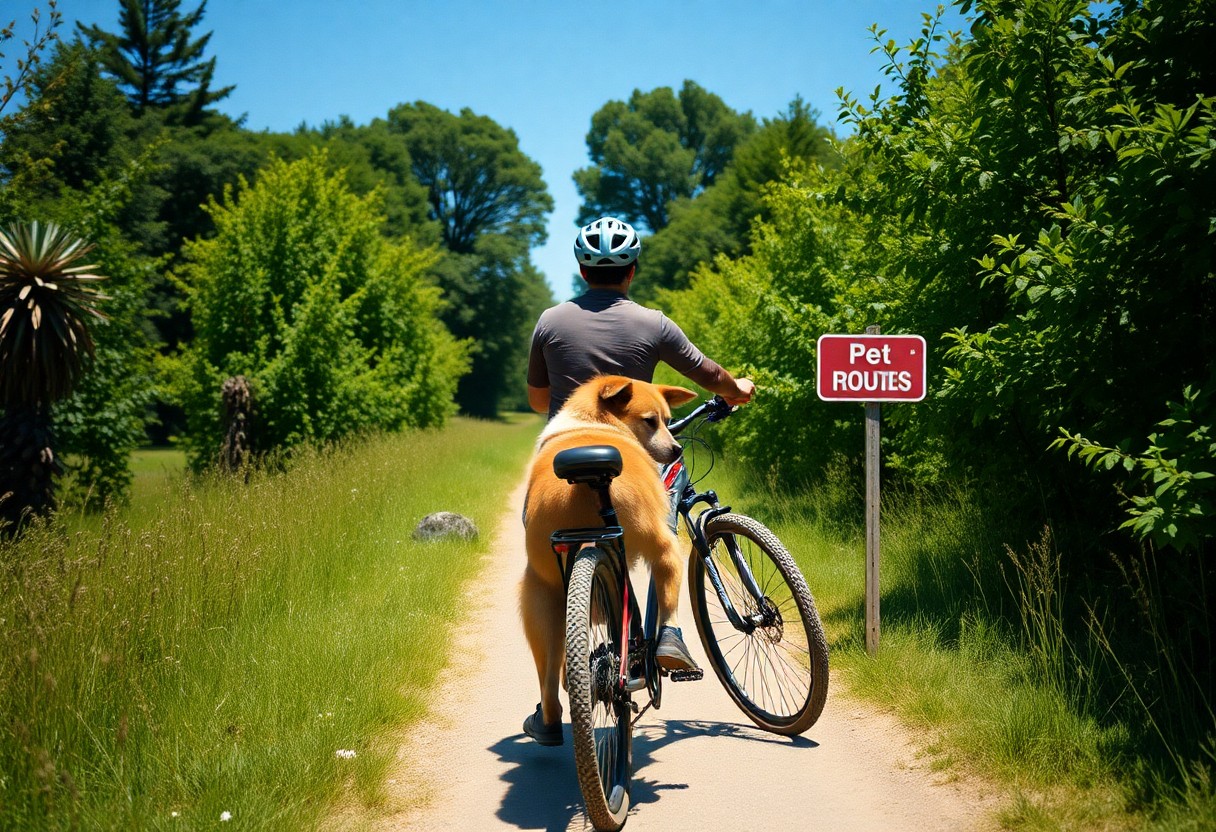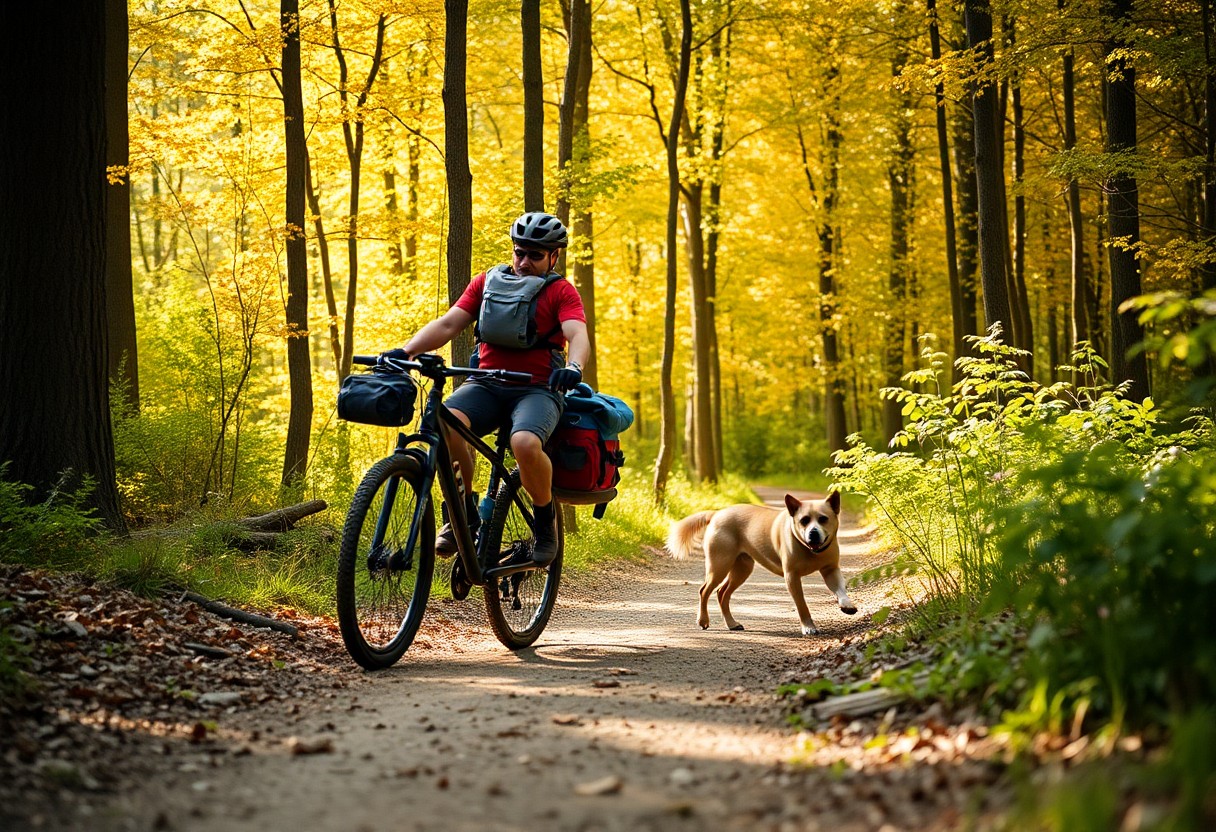Many adventurers are drawn to the idea of bikepacking with their dogs, but this exciting experience requires careful preparation and consideration. From ensuring your dog’s fitness and health to selecting the right gear, there are important lessons to learn along the way. You’ll need to navigate potential challenges such as weather changes and finding pet-friendly accommodation. With the right approach, bikepacking can strengthen your bond with your furry companion while creating unforgettable memories together. Discover practical tips to make your journey enjoyable and safe for both you and your dog.
Navigating the Terrain: Essential Gear for Dog-Friendly Bikepacking
Selecting the right equipment is fundamental for a successful bikepacking adventure with your dog. You’ll need to ensure that both you and your canine companion are well-prepared for the diverse trails ahead. Prioritising comfort, utility, and safety will contribute to an enjoyable experience, allowing you to focus on the journey rather than misadventures. From suitable bicycles to imperative dog gear, the right choices can make all the difference on the trail.
Choosing the Right Bike and Trailer
Finding a bike that complements your cycling style yet supports your dog is key. You might prefer a sturdy mountain bike for rugged terrain, while integrating a well-designed trailer can accommodate your dog comfortably. Always opt for a setup that ensures your dog can sit or lie down safely, so check the trailer’s weight capacity and stability on varying surfaces.
Must-Have Dog Gear for Comfort and Safety
Your bikepacking journey should include imperative dog gear that enhances both comfort and safety. A fitted dog harness prevents undue strain during rides, while a well-padded seat or mat offers a comfortable spot for your dog within the trailer. Don’t forget to pack enough fresh water, as dehydration can quickly become a serious issue on long trails.
A few items you’ll find indispensable are a secure harness, which helps keep your dog stable during rides, and a breathable dog jacket for cooler weather. A collapsible water bowl and portable water bottle allow for quick hydration breaks and keep your dog energetic throughout your trip. Consider investing in reflective gear to enhance visibility during early morning or evening rides. A sturdy set of dog booties can protect their paws on rugged terrain, preventing injuries and ensuring they remain comfortable. With the right gear, you can focus on exploring the great outdoors with your furry friend, confident in their safety and comfort.
Training for the Journey: Preparing Your Dog for Adventure
Preparation is the cornerstone of a successful bikepacking trip with your dog. By training your dog properly before hitting the trails, you’ll foster a safe and enjoyable experience for both you and your furry companion. Focus on important skills, gradually build your dog’s endurance, and ensure they are accustomed to the demands of your adventures, paving the way for a harmonious journey together.
Basic Command Training for Trail Behaviour
Teaching your dog basic commands like sit, stay, and leave it will significantly enhance their behaviour on the trail. Commands help manage your dog’s excitement, ensuring they stay calm around other hikers and wildlife. Practising these commands in various environments will prepare your dog for the unpredictability of the great outdoors, allowing for a smoother adventure.
Building Stamina and Endurance Before You Go
Increasing your dog’s stamina is vital for ensuring they can handle the rigours of bikepacking. Start by incorporating regular walks and runs into your routine, gradually increasing the distance and intensity to build their endurance levels. Consider mixing in some uphill treks to simulate trail conditions, giving your dog the strength and resilience they need for longer journeys.
Focus on steady progress by gradually increasing your dog’s exercise duration by about 10-15% each week. For instance, if your dog is comfortable with a 30-minute walk, aim for 33-36 minutes the following week. Incorporating varied terrains can also help, as this not only builds muscle strength but also improves their agility. Additionally, consider some fun, engaging activities like fetch or obstacle courses to keep your dog mentally stimulated and excited about exercise, reinforcing their eagerness for the adventure ahead.

Trail Etiquette: Keeping You, Your Dog, and Nature Safe
Respecting trail etiquette enhances the experience for everyone, including your four-legged companion. Keeping your dog on a lead, picking up after them, and yielding to other trail users are fundamental practices that ensure harmony on the trail. Observing these guidelines not only contributes to safety but also protects the environment from potential hazards, allowing everyone to appreciate the natural beauty.
Understanding Trail Rules and Regulations
Trail rules vary significantly between regions, hence it’s imperative to familiarise yourself with the specific regulations of your chosen path. Some trails permit dogs only on leads, while others may impose restrictions during certain seasons or prohibit dogs entirely for wildlife protection. Reviewing signage and online resources before setting out ensures you comply with local laws, keeping both your dog and the trail safe.
Practising Good Dog Manners on Shared Paths
Dogs, while enthusiastic companions, require proper training and discipline on shared paths. Keeping your dog on a lead prevents them from darting unexpectedly and startling other trail users. Ensure your dog is responsive to commands and stays calm around cyclists, hikers, and equestrians. Moreover, if your dog shows any signs of aggression, it’s wise to avoid crowded areas or take a different route until they’re more comfortable.
Encouraging good behaviour on shared paths involves consistent training and reinforcement. For instance, when approaching other trail users, ask your dog to sit and stay to calm any excitement. Practising these commands not only reinforces your control over your dog’s actions but also conveys a sense of responsibility to passers-by. Frequent social interactions during training, alongside rewards for positive behaviour, help your dog acclimatise to the presence of others, fostering a calmer, more enjoyable experience for all trail-goers.
Troubleshooting on the Trail: Common Challenges and Solutions
Even the best-laid plans can encounter hiccups on the trail. Issues such as mechanical failures, fatigue from long rides, or unexpected dog behaviour can arise. Carrying necessary tools for quick repairs, scheduling regular breaks, and always having plenty of water can make a world of difference. Learning to adapt to these challenges will enhance your overall experience and ensure both you and your dog remain safe and happy.
Dealing with Weather and Environmental Factors
Weather can be unpredictable, significantly impacting your trip. Pack for varied conditions by including waterproof gear for you and a dog jacket for your canine companion. Monitor forecasts and adjust your route accordingly. Choose shaded paths during hot days, and plan for early starts if rain is expected. Understanding your dog’s comfort level with temperature changes ensures they remain energetic and healthy. Perceiving these conditions early on helps you manage your adventure effectively.
Managing Dog Behaviour in New Environments
New environments pose unique challenges for your dog’s behaviour. Unfamiliar smells, sounds, and sights can lead to excitement or anxiety. Gradually introducing your dog to new settings during short walks helps them acclimatise. Use positive reinforcement to encourage calm behaviour and ensure they are always securely leashed when exploring. Consistent commands aid in establishing a sense of security for your dog amidst the chaos that accompanies novel surroundings.
For example, if you notice your dog becoming anxious around bustling crowds or wildlife, create a safe space where they can retreat. Use familiar toys or blankets to provide comfort and stability. Gradually expose them to these challenging situations, rewarding calmness with treats and praise. This technique strengthens their confidence and ensures positive experiences during your bikepacking adventures. Observing your dog closely enables you to anticipate their reactions and tailor your approach accordingly.
Striking a Balance: Planning Itineraries That Suit Both You and Your Dog
Creating an itinerary that accommodates both your adventures and your dog’s needs requires thoughtful planning. Consider the distances you intend to cover each day, ensuring they align with your dog’s endurance level. Incorporate rest days, so both of you can recuperate and explore the surroundings. Prioritising shorter, more frequent stops will enhance your journey, while avoiding strenuous trails that may overwhelm your furry companion.
Finding Dog-Friendly Campsites and Amenities
Researching dog-friendly campsites is fundamental to ensuring a smooth trip. Many campgrounds now accommodate pets, offering designated areas for them to roam and facilities like dog parks. Don’t overlook local rules; some sites may have restrictions or require pets to be leashed. Using apps or websites dedicated to dog-friendly travelling will streamline your search for suitable stops, ensuring you and your dog have a comfortable refuge each evening.
Flexibility in Schedule: Listening to Your Dog’s Needs
Your dog’s responses to the trail can significantly alter your plans. If they seem tired or distracted, adjusting your itinerary might be necessary. Pay attention to their body language—signs of fatigue or discomfort shouldn’t be ignored. Consider shortening your distances or extending rest breaks to allow them to recharge. Perhaps even choose a scenic spot to relax if they’re in need of more downtime.
Being flexible with your schedule is as important as having a plan. For instance, if your dog is looking slightly sluggish during a mid-morning climb, a quick break can make all the difference. Allowing ample time for bathroom breaks, water stops, and leisurely walks will also keep their spirits high. Additionally, consider incorporating off-trail adventures, like short detours to explore nearby water bodies—your pup may appreciate the chance for a refreshing dip. Merely adapting your expectations based on how your dog is feeling can enhance both their experience and yours immensely.
Final Words
Ultimately, bikepacking with your dog can be an enriching adventure that fosters a deep bond between you and your furry companion. By planning appropriately, ensuring your dog’s comfort and safety, and being mindful of their needs on the trail, you can create unforgettable experiences together. Embrace the lessons learned from each outing, as they will enhance your future journeys. With patience and preparation, you’ll find that the joys of bikepacking with your dog far outweigh the challenges.
